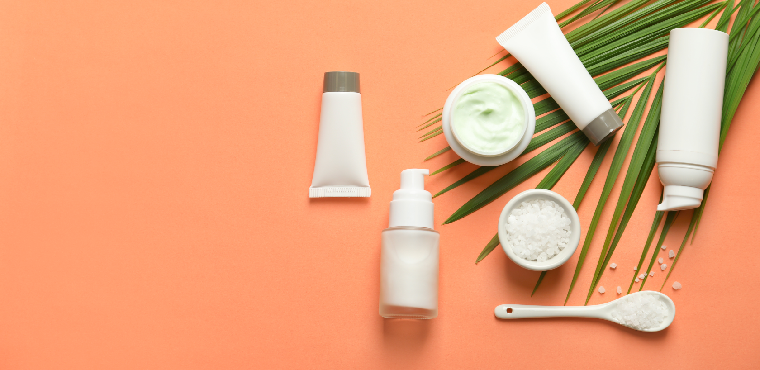
May 8, 2019
Lotion, Serum and Moisturizer; What’s the Difference?
Difference Between Lotions, Serums & Moisturizers
All skincare is not made equal, and anyone in the skin care formulation industry can tell you that. We often use blanket terms to describe skin care products that are actually very different in terms of ingredients, purpose, and benefits. They’re all part of your skin care routine, but what is the purpose of each? And when should I use which?
Serums
Serums are very runny and have a gel or liquid texture. Being a light and fast-absorbing liquid, serums contain a high concentration of skincare minerals, vitamins, antioxidants and acids. The main purpose is to penetrate deep into the skin in order to repair the skin on a cellular level. Serums can penetrate all through the epidermis layer of the skin to the dermis layer.
Serums go onto the skin first, so apply it before a moisturizer. They mostly have a specific purpose such as anti-aging, collagen production or to dry out oily skin. Mulberry extract, for example, addresses brown spots on the skin. In anti-aging serums, Vitamin C is a key ingredient to help stimulate collagen production and improve skin immunity. Rooibos tea extract is a powerful skin antioxidant and anti-inflammatory, and also very popular in serums with anti-aging benefits.
Serums don’t necessarily replace moisturizers though. Often, if you have drier skin or if it’s during the winter months, your skin might require additional moisturizer that has more oils added to it and help rehydrate your skin.
Moisturizers
The main purpose of a moisturizer is to hydrate the skin and prevent existing moisture in your skin from escaping. It only penetrates the outer three layers of the skin, unlike serums that penetrate deep into the cells. Moisturizers have a heavier consistency than serums since it’s different combinations of water, oils, nutrients and sometimes wax. Moisturizers can be divided into three categories to better describe their purpose, those are humectants, emollients, and occlusives.
Humectant moisturizers help counteract the drying effect some skincare ingredients as soaps and alcohol have. It draws water molecules from the atmosphere and pulls them onto the skin’s surface to be absorbed. Humectants aren’t usually advertised specifically, so instead, you can look for common humectant ingredients like hyaluronic acid and glycerin. This is what makes your skin appear plumper.
Occlusive moisturizers create a physical barrier that serves two purposes. Firstly, to help prevent water loss. And secondly, to protect the skin from external irritants. Occlusive agents have a heavy, thick consistency, so it’s no surprise that the most common occlusive agents include oils and waxes, such as beeswax and carnauba wax.
Emollient moisturizers restore the skin’s natural lipid barrier that gets depleted with age. With this barrier intact, the skin cells can retain moisture more efficiently and the skin is naturally less sensitive to irritants. In general, it makes your skin feel less itchy and more comfortable. It also helps to improve the appearance of wrinkles and fine lines. Natural lipids get depleted by sun exposure, makeup removers, UV radiation and our good old friend time. Common emollients include colloidal oatmeal, shea butter, and isopropyl palmitate.
Lotions
I’ve heard some skin experts say that every lotion is a moisturizer, but not every moisturizer is a lotion. And that’s a good way to describe it. A lotion is a type of moisturizer that has a runnier consistency, not the thick buttery feel you get from some moisturizers. Lotions have a low viscosity, and the water content is quite high. Due to bacteria that can form due to the amount of water, the industry adds preservatives like parabens, benzyl alcohol or salicylic acid. In some cases, fragrances are added to mask the smell of the additional chemicals. These additions usually make up anything from 0.0% to 5% of the ingredients. For this reason, we tend to use lotions on our bodies, while we reserve creamier moisturizers with fewer preservatives for our faces. A lotion with its runny consistency also goes onto the skin much more easily.
The greasier moisturizers with the high oil and wax content are often what we use for areas with very dry skin, or on your face as a night cream. These moisturizers with a high amount of oil and wax usually work best for nighttime so that you don’t have to worry about an oily residue on your skin during the daytime. This way you can still get the nutrients your skin needs to repair.